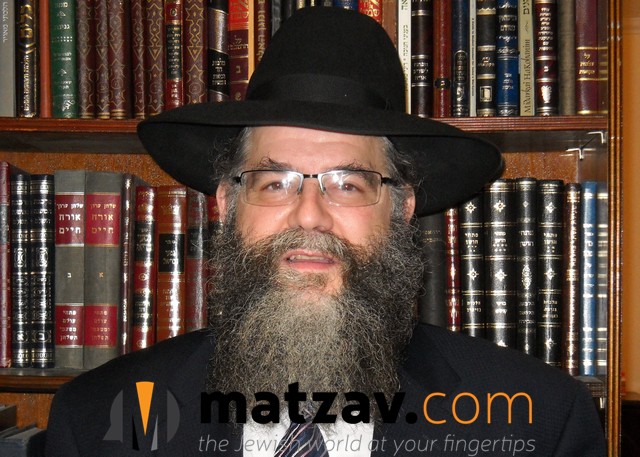
By Rabbi Nosson Greenberg
In this week’s parsha, Hashem instructs Moshe in the manufacturing of the Bigdai Kehunah– the clothing worn by the Kohanim whilst performing the service in the Mishkan. The Kohen Gadol wore eight articles of clothing including the Aiphod – an apron-like cloth with two straps going up from the waist, continuing over the shoulders, ending high-up on the the Kohain’s front. [Gold cables were then connected to the edges of these straps from which hung the Choshen.] The ends of each of the two straps were bejeweled with an identical precious Shoham stone. Each stone had engraved upon it six of the names of the twelve Shevatim-tribes. Now, one has to wonder what these two stones represented. It could not just be to have a place on the Kohain Gadol’s clothing that give recognition to the holy Shevatim (as the passuk suggests when it says “Zikaron livnai Yisrael”- “ a reminder of the Yidden” (Shemos, 28:12), for their names were also engraved front row center onto the twelve stones of the Choshen, each tribe with its own unique precious stone. One also needs to understand why, of all the precious stones available, the Shoham stone was the one chosen to be on the two Aiphod straps. The Ba’al Haturim tells us that these two stones were symbolic of the two most famous stones in Jewish history namely the Luchos. So why weren’t two Sanperinon (sapphire?) stones used, the actual stone used for the second pair of Luchos (see Rashi to Shmos, 34:1)? And, if these shoulder stones do symbolize the Luchos, wouldn’t it then have been more apropos to engrave upon them the Ten commandments, five on each stone?
Perhaps we can suggest the following. We all know that there are two components to our Torah: Biksav & Be’al peh – the Written & Oral Torah. The written part are the words of the Torah and its 613 commandments. The oral portion (which explains and clarifies in much detail the understanding of the written part) was transmitted by Hashem to Moshe at Sinai. The two are inseparable, and each without the other is not a true expression of Yiddishkeit. The Bais Halevi (Derasha 18) famously posits that the first set of Luchos miraculously had all of the components of Torah upon them, the Biksav & the Be’al peh. He cites a Talmud Yerushalmi that explains that it was in the spaces between each of the commandments where one could find the Be’al peh portion. The (post-Aigel) second pair, however, only had the Ten Commandments upon them; the Be’al peh portion had been removed and inscribed in a new location, on the most beautiful of vellums, the heart of a Yid.
So, as the Ba’al Haturim said the two Shoham shoulder-stones symbolized the Luchos. But not the first short-lived pair, rather the second. The Shoham stones themselves represented the actual tablets of the second Luchos that had upon it the Written Torah. And the names of the Shevatim signified man’s role as the present carrier of the Oral Torah. Note that man is represented here specifically as twelve Shevatim, six engraved upon each stone. [He could have been symbolized by engraving the words “Bnai Yisrael” onto each stone.] The reason for this may be that each of the Luchos had five Commandments. That means each stone had six empty spaces, (with a total of twelve for the pair) upon which lay the Torah of Be’al peh in the first pair of Luchos. By the second Luchos when the Be’al peh of those twelve slots transferred onto the hearts of man, it kept its division of twelve smoothly transitioning into the twelve Shevatim, each Shevet taking over for an empty space from the first pair of Luchos. Therefore, as the current representative on the stones of the housing of the Torah of Be’al peh, it is most fitting that they do so as twelve Shevatim.
As for why a Shoham stone was used: Well, Shoham is spelled in Hebrew shin, hai and mem. These are the same letters that can spell the word Hashem and Moshe. What greater hint is there to the transmission of Torah of Be’al peh, which began from the mouth of Hashem and then to the ears and then mouth of Moshe, than by using the Shoham stone made up of the same letters.
Have a great Shabbos.
Rabbi Nosson Greenberg is rov of Khal Machzikei Torah of Far Rockaway, N.Y., and maggid shiur at Yeshiva of Far Rockaway.
{Matzav.com Newscenter}











